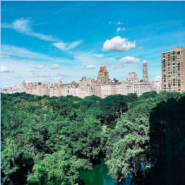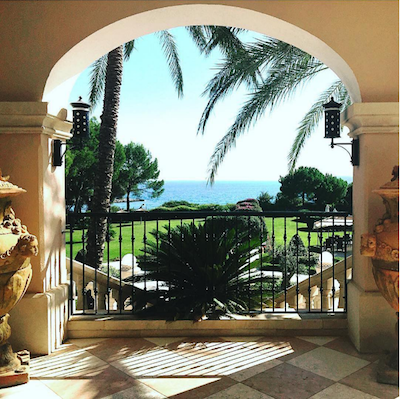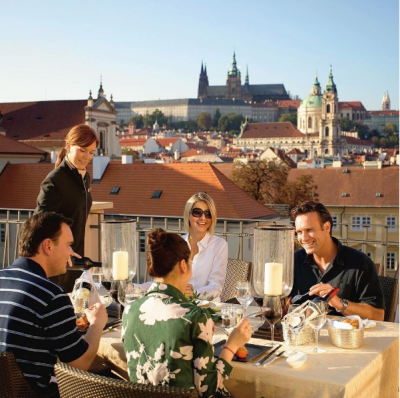 Ritz-Carlton Instagram of Central Park hotel
Ritz-Carlton Instagram of Central Park hotel
Details as small as the colors in an Instagram photo can influence engagement, according to a study by Cortex.
“Instagram Content Analysis: Luxury Hospitality 2016” examined how factors ranging from the colors in an Instagram image to the types of hotels photographed and overall content of a photo can impact consumer engagement. With social media being both an integral part of marketing today and an arena in which it is difficult to stand out, maximizing effectiveness in the smallest of details can give a brand an edge.
"We're huge fans of data-driven decision-making for marketing when it comes to luxury brands," said Brennan White, CEO of Cortex, artificial intelligence for marketing. "As such, a few tips seem obvious but are simply not being done by most brands in this space.
"[First,] Optimize your post times," he said. "Each brand and industry has different demographic targets; those targets have different habits and times when they are active online.
"For luxury this is pronounced. Due to the global, affluent nature of the demographics they are operating across more timezones and have different habits. Making sure you're posting not only when those demographics are online, but when they are engaging is a key to success.
The color of money
For the study, Cortex looked at the past year’s worth of Instagram content from 10 brands: Fairmont, Four Seasons, Mandarin Oriental, Peninsula Hotels, St. Regis, The Ritz-Carlton, Taj, Rosewood, Belmond and Banyan Tree.
 Peninsula Hotels Instagram
Looking at the body of images as a whole, Cortex found that a “medium aquamarine” color performed the best of 256 unique colors. When controlling for other content features, images featuring the color performed 52 percent better in engagement.
The success of the color is not entirely surprising given its association with tropics and beaches, but the enormity of the boost – as well as the fact that the color, not water itself, provides it – is significant.
While including or concentrating the color in all images could counteract the boost and incite a form of fatigue among consumers, subtle increases could help engagement. Cortex notes that St. Regis could have engaged with an additional 41,000 consumers this year if it had used more of the color.
While beaches, ocean and pools are the easy way to get the color into content, using it in the background or finding umbrellas and chairs is also an option. Including medium aquamarine in more subtle position of the image, or as an alternative or complement to brand colors when including texts could also reap the benefits, provided brands are careful not to compromise identity when doing so.
Peninsula Hotels Instagram
Looking at the body of images as a whole, Cortex found that a “medium aquamarine” color performed the best of 256 unique colors. When controlling for other content features, images featuring the color performed 52 percent better in engagement.
The success of the color is not entirely surprising given its association with tropics and beaches, but the enormity of the boost – as well as the fact that the color, not water itself, provides it – is significant.
While including or concentrating the color in all images could counteract the boost and incite a form of fatigue among consumers, subtle increases could help engagement. Cortex notes that St. Regis could have engaged with an additional 41,000 consumers this year if it had used more of the color.
While beaches, ocean and pools are the easy way to get the color into content, using it in the background or finding umbrellas and chairs is also an option. Including medium aquamarine in more subtle position of the image, or as an alternative or complement to brand colors when including texts could also reap the benefits, provided brands are careful not to compromise identity when doing so.
 St. Regis Instagram photo
Although a color associated with water is the top performer, the best performing image element is a place, while the worst is people. Images with palaces or palatial elements perform 30 percent better, while those with people do 18 percent worse, even if they have winning colors.
Cortex notes that Mandarin Oriental includes people in nearly half of its images. The study’s findings suggest that by eliminating people from photos, the brand would see an uptick in engagement.
St. Regis Instagram photo
Although a color associated with water is the top performer, the best performing image element is a place, while the worst is people. Images with palaces or palatial elements perform 30 percent better, while those with people do 18 percent worse, even if they have winning colors.
Cortex notes that Mandarin Oriental includes people in nearly half of its images. The study’s findings suggest that by eliminating people from photos, the brand would see an uptick in engagement.
 Mandarin Oriental Instagram photo
The Ritz-Carlton is currently seeing the best engagement based on the elements of its images, at 1.75 percent. St. Regis, in second place, tallies at less than half The Ritz-Carlton's rate.
Saturating a feed with more appealing content is not the answer for brands looking to improve Instagram performance; a monotonous feed will quickly bore consumers. However, working to determine what content works best can help planners construct and execute a more effective content strategy that leverages certain image qualities that tend to correlate to higher engagement.
In the details
Marketers must also educate themselves on what the consumer values in Instagram compared to other social platforms, tailoring their content in a macro sense in addition to the micro-details of the image itself.
Facebook and Instagram are similar to red wine and white wine, according to a study of the two platforms undertaken by Facebook.
Besides using Facebook for news and keeping up with friends and family and turning to Instagram for inspiration, users also generally look for humor on Facebook and unexpected encounters on Instagram. Just as one would prefer red wine with steak and white wine with seafood, both platforms offer unique advantages suited to separate purposes (see story).
Studies focusing on other sectors have also examined how background and content of images impact performance.
Fifty-nine percent of branded Instagram posts feature individuals, while 38 percent only include product, according to an infographic by Curalate.
The infographic’s figures identify the top trends among posts from the top 1 percent of Instagram photographs and includes figures on content positioning, aesthetics and how images differ across product categories. With a community of more than 500 million, Instagram is a viable mobile platform for marketers looking to drive business through a visual medium (see story).
"Trust the quality of the location and the image," Mr. White said. "Overwhelmingly, for luxury Instagram posts with no Instagram filter perform best. This is not true with most other industries.
"Don't rely on an Instagram filter to fix a bad photo," he said. "Invest in a great photo and great setting, and let the photo speak for itself."
Mandarin Oriental Instagram photo
The Ritz-Carlton is currently seeing the best engagement based on the elements of its images, at 1.75 percent. St. Regis, in second place, tallies at less than half The Ritz-Carlton's rate.
Saturating a feed with more appealing content is not the answer for brands looking to improve Instagram performance; a monotonous feed will quickly bore consumers. However, working to determine what content works best can help planners construct and execute a more effective content strategy that leverages certain image qualities that tend to correlate to higher engagement.
In the details
Marketers must also educate themselves on what the consumer values in Instagram compared to other social platforms, tailoring their content in a macro sense in addition to the micro-details of the image itself.
Facebook and Instagram are similar to red wine and white wine, according to a study of the two platforms undertaken by Facebook.
Besides using Facebook for news and keeping up with friends and family and turning to Instagram for inspiration, users also generally look for humor on Facebook and unexpected encounters on Instagram. Just as one would prefer red wine with steak and white wine with seafood, both platforms offer unique advantages suited to separate purposes (see story).
Studies focusing on other sectors have also examined how background and content of images impact performance.
Fifty-nine percent of branded Instagram posts feature individuals, while 38 percent only include product, according to an infographic by Curalate.
The infographic’s figures identify the top trends among posts from the top 1 percent of Instagram photographs and includes figures on content positioning, aesthetics and how images differ across product categories. With a community of more than 500 million, Instagram is a viable mobile platform for marketers looking to drive business through a visual medium (see story).
"Trust the quality of the location and the image," Mr. White said. "Overwhelmingly, for luxury Instagram posts with no Instagram filter perform best. This is not true with most other industries.
"Don't rely on an Instagram filter to fix a bad photo," he said. "Invest in a great photo and great setting, and let the photo speak for itself."
